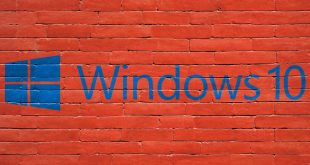Introduction to Windows 11
With the evolution of technology, the operating systems we use on our computers are also advancing. One of the most popular and widely used operating systems, Microsoft Windows, has recently introduced its latest version: Windows 11. This version boasts a multitude of new features, improved performance, and a sleek design. This blog post aims to guide you on how to upgrade to Windows 11 from an existing Windows 10 setup without any cost.
Windows 11 is Microsoft’s newest addition to its operating system lineup. It brings an array of updates and enhancements, providing a more integrated, streamlined experience for users. This article will provide a comprehensive guide for those who wish to acquire Windows 11 for free, covering everything from key features to troubleshooting common installation issues.
As the world moves towards more digital and remote work, the need for a robust and reliable operating system has never been greater. With the introduction of Windows 11, Microsoft promises to deliver just that.

Photo by B_A on Pixabay
When did Windows 11 come out?
The anticipation for Windows 11 was high ever since Microsoft announced its development. The official release date for Windows 11 was October 5, 2021. This release was met with widespread acclaim for its improved functionality and aesthetics. Users from all over the world were excited to install Windows 11 and explore the new features it offered.
Although the rollout was gradual, with Microsoft prioritizing newer devices first, many users have already upgraded to the new OS, and the feedback has been largely positive. The launch of Windows 11 marks a significant milestone in the history of Microsoft’s operating systems, ushering in a new era of digital interaction and productivity.
Key features of Windows 11
Windows 11 comes with a plethora of new features designed to enhance user experience and productivity. One of the most noticeable changes is the centered Start Menu and Taskbar, providing a fresh and modern look. This aesthetic overhaul, combined with the rounded corners on windows, gives the OS a cleaner, more contemporary feel.
Another key feature is the introduction of Snap Layouts and Snap Groups. These features allow users to organize multiple windows on their screen more efficiently, promoting multitasking. Further, Windows 11 also includes integrated Microsoft Teams chat, making it easier than ever to stay connected with colleagues, friends, and family.
In addition, Windows 11 introduces Direct Access, a feature that allows users to access a wide range of hardware-accelerated AI technologies. This feature allows for more powerful and efficient computing, especially for users who require high-performance systems for their work or hobbies.
Requirements for upgrading to Windows 11
Before upgrading to Windows 11, it’s essential to ensure that your current system meets the necessary requirements. The primary prerequisite is that your device must be running a licensed version of Windows 10. Additionally, the device should have a processor with at least 1 GHz clock speed with two or more cores on a 64-bit processor or System on a Chip (SoC).
Your system should also have 4GB of RAM or more for 64-bit systems and 64 GB or larger storage. A DirectX 12 compatible graphics card or integrated GPU with a WDDM 2.0 driver, along with a high definition (720p) display, is also required.
Is Windows 11 upgrade free?
One of the most frequently asked questions by users is: Is Windows 11 upgrade free? The answer is yes, Microsoft has made the upgrade to Windows 11 free for eligible Windows 10 PCs. This means that users running an authentic version of Windows 10 can upgrade to the latest version without any additional cost.
However, it should be noted that although the upgrade to Windows 11 is free, your device must meet the minimum system requirements. If your current system does not meet these requirements, you might need to consider upgrading your hardware or purchasing a new device.
Can you upgrade to Windows 11 for free?
Yes, if your device meets the minimum system requirements and you’re running a genuine copy of Windows 10, you can upgrade to Windows 11 for free. Microsoft has made this clear in their official statements, ensuring users that they can experience the latest features and enhancements without any additional cost.
How to upgrade to Windows 11 from Windows 10 for free
Upgrading to Windows 11 from Windows 10 for free is a straightforward process. First, confirm that your device meets the minimum system requirements. Next, check for updates in your current Windows 10 setup. If your device is eligible, you’ll see an option to upgrade to Windows 11.
Once you’ve confirmed your eligibility, download and install the Windows 11 upgrade. Your device will then be ready to run the latest version of Windows.
Steps to install Windows 11
The process to install Windows 11 is simple and user-friendly. After confirming that your system meets the requirements and backing up your data, navigate to the “Settings” menu on your Windows 10 PC. From there, click on “Update & Security,” then “Windows Update.” If your system is eligible, you’ll see the “Download and install” option for Windows 11.
After the download is complete, the installation process will begin. Follow the on-screen instructions, and upon completion, your system will restart. You’ll then be greeted with the fresh new look of Windows 11.
Troubleshooting common issues in Windows 11 installation
While the process to install Windows 11 is generally smooth, users may encounter some issues. These can range from installation errors to system compatibility issues.
If you encounter an error during installation, the first step is to check your system requirements again. If your system is compatible and you’re still facing issues, try running the Windows Update Troubleshooter.
If you’re having trouble with the Windows 11 installer, ensure that your current Windows 10 setup is updated to the latest version. Additionally, disconnecting non-essential devices during the installation can also help avoid any potential conflicts.
How to download the Windows 11 installer
To download the Windows 11 installer, you’ll need to go through the Windows Update section in your current Windows 10 setup. If your device is eligible for the upgrade, you’ll find the option to download and install Windows 11 there.
Once the download is complete, the installer will guide you through the process of upgrading your system. Be sure to follow each step carefully to avoid any potential issues.
Tips for using Windows 11 effectively
After successfully installing Windows 11, there are a few tips you can use to make the most of your new operating system. Familiarize yourself with the new Start Menu and Taskbar layout. Explore the new Snap Layouts and Snap Groups features to enhance your multitasking capabilities.
Make use of the integrated Teams chat for seamless communication. Finally, regularly check for updates to ensure your system stays up-to-date and secure.
Conclusion: The benefits of upgrading to Windows 11 for free
Upgrading to Windows 11 for free brings numerous benefits. Apart from the new and improved features, you also get a more secure, stable, and efficient operating system. With this guide, you should now know how to upgrade to Windows 11 from your existing Windows 10 setup for free.
Windows 11 offers a fresh, modern look and feel, combined with enhanced performance and productivity features. So, if your system meets the requirements, upgrading to Windows 11 is a decision you’re likely to appreciate. Experience the best of Microsoft’s latest OS without any additional cost. Upgrade to Windows 11 and unlock a world of new possibilities.
 Windows Informer Windows OS Tips
Windows Informer Windows OS Tips 
